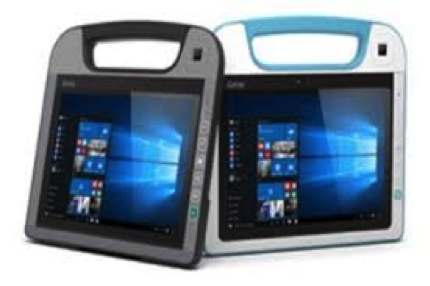
During a recent and extended stay in hospital it became quickly evident that Technology now has a key and prominent place in Patient care with medical staff making use of Smartphones, Tablets and applications. Whilst this is evident to see and experience as a patient, it led me to think what is required from a provisioning perspective, to make this happen.
Over the past several years, the presence of smartphones, tablets and their applications has been one of the biggest shifts within the hospital setting, as well as society at large. These devices can provide a wealth of up to date information for both Doctors and Nurses and all within a fingertip’s reach.
As this approach becomes more popular in this sector, there is an expanding variety of applications for these devices that will allow all medical staff more interaction in the patient care experience.
 There are several popular smartphone and tablet apps for physicians. The iPad, which has almost become a default tablet, has countless popular apps ranging from medical calculators to clinical presentations, i.e. Imagery, Test results, etc.
There are several popular smartphone and tablet apps for physicians. The iPad, which has almost become a default tablet, has countless popular apps ranging from medical calculators to clinical presentations, i.e. Imagery, Test results, etc.
While some hospitals may not directly provide smartphones and tablets to their staff, hospitals still have to be aware of them, especially in an age where patient privacy is of utmost importance. Hospitals should make sure that all staff smartphones and tablets adhere to strong security features and processes, as they exist as another outlet for data breaches, which could do significant harm to patients and the hospital’s reputation.
With Security top of mind, these would be key areas for attention by IT Security owners and users.
Authentication. If a device requires access to a patient’s protected health information, it has to have some basic features, such as individualised authentication. The device must require the user to identify themselves uniquely, typically through entry of a valid user ID and password so it knows it is communicating with its specific user.
Encryption of data. The number one breach is the lost laptop or device containing unencrypted electronic protected health information. Hospitals really shouldn’t consider it optional to encrypt data on their tablets because a portable device with Patient data is simply too big and easy a target, whereas data in place on a server is at lower risk than data on a handheld device that could be easily lost or stolen.
 Antivirus and operating system protections. All devices must have antivirus programs to guard against malware, spyware and other malicious software. One must also guard against jail breaking of smart devices, as any tampering with the operating system, exposes the device to vulnerabilities and, potentially, the ability to install and run non-licensed or vulnerable applications.
Antivirus and operating system protections. All devices must have antivirus programs to guard against malware, spyware and other malicious software. One must also guard against jail breaking of smart devices, as any tampering with the operating system, exposes the device to vulnerabilities and, potentially, the ability to install and run non-licensed or vulnerable applications.
Removal of unnecessary functions and applications. A device’s ability to download any and all applications, is another area of risk. Free or inexpensive apps downloaded from the Internet may be malicious and may not operate as advertised. A policy of limiting the functions and apps on the device to reduce the risk of introducing apps that may not be trustworthy is a hard rule that should be considered for all.
Improving Visibility. Ever present cyber threats and increasing dependence on digital technology, mean an overall architectural approach to security is critical. Cisco products provide a rich set of security features which, if fully enabled, allow the ‘network to operate as a sensor’ to help detect attacks, mitigate their impacts and provide remediation.
To find out more about Cisco’s work with the NHS, or for further advice please see Cisco’s UK Health and Care webpages and the Digital Strategy for Health and Care publications in particular.